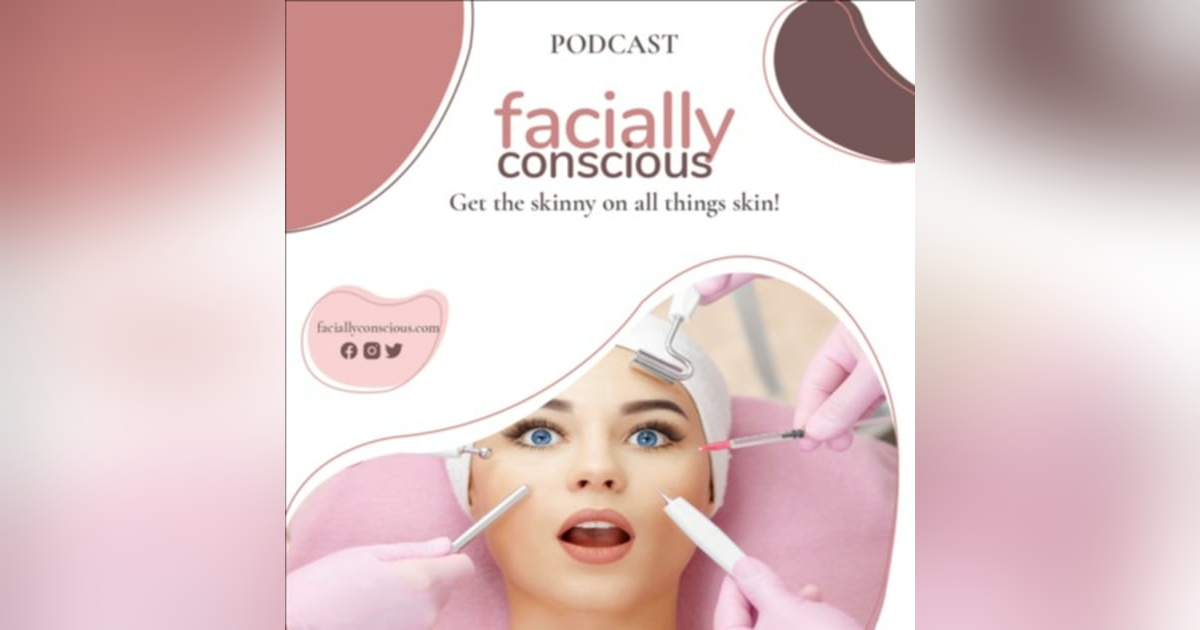While there's lots of triggers for acne flare-ups, including diet, poor hygiene, pollution, tobacco smoke, high humidity, pore-clogging cosmetics, picking your face and just plain old stress, none of them actually cause acne. Here's why:
Acne vulgaris is a chronic inflammatory disorder of the sebaceous hair follicle (AKA: the follicular apparatus, pilosebaceous unit or pore) on the face, chest and back. It is associated with increased sebum production, abnormal keratinization, overgrowth of anaerobic bacteria and increased release of inflammatory mediators.
Known to be a heritable condition, it has long been understood that no ‘one’ gene contributes to a predisposition to acne. It is only within the last five years that independent researchers have discovered over sixty genes contributing to not just the appearance of acne but its severity, with small variations of hundreds of genes spread across the genome linking the disorder to other traits, including behavioral, hormonal, inflammatory and psychiatric.
An acne lesion begins as a comedone in the pore throat, known as the infundibulum (due to its funnel shape).
There are 8 physiological factors of acne:
- Comedones. Impactions of skin cells, sebum and melanin that begin in the mid-infundibulum. As the impaction grows, the top becomes visible as it grows and protrudes from the upper infundibulum.
- Hyperkeratinization. Keratinocytes, the primary cell in the epidermis that produces the hard, waterproof protein ‘keratin’, naturally migrate to the skin’s surface where they are released into the air or scrubbed off or abraded from the skin. When cells are genetically-induced to over-produce keratin, the cells bond and adhere to the skin. This forms a plug in the infundibulum that is infiltrated by sebum.
- Sebum. Each pore consists of sebum-producing glands attached to a canal from which a hair follicle grows. The larger and more plentiful the glands attached to a pore the more sebum is secreted, producing what is known as ‘oily’ skin. A simple triglyceride formed of three glycerols, sebum is secreted by sacrificial cells known as sebocytes, which line the sebaceous glands. As the cell grows, sebum is formed when the cell converts its organelles to triglycerides then explodes into the hollow part of the gland, thereby ‘sacrificing’ itself in the production of sebum. Sebum is released from the gland into the area around the hair follicle, which acts like a wick to carry the triglycerides to the skin’s surface. If sebocytes are deficient in omega-6 fatty acid (aka: linoleic acid), sebum becomes dry and ‘sticky’, which causes the oily secretion to act like glue, holding keratinocytes in the infundibulum. ‘Sticky’ sebum is required to form acne lesions, not just the presence of sebum, regardless of how much oil is present.
- Hormones. Sebum production is stimulated by the hormone dihydrotestosterone and the stress hormone, cortisol. Females with higher levels of circulating androgens, including testosterone, are more likely to have acne. However, for these hormones to affect acne, the cell receptor for each hormone must be present on the sebocyte, the cell that makes sebum. If this receptor is not present sebum is not affected. We inherit the genes for the receptors from one or both of our parents.
- Microbes. Although anaerobic bacteria are natural to everyone’s skin microbiome, S. epidermis and one of the subtypes of C. acnes thrive on the sebum that collects in the oxygen-deprived area under the obstructed pore opening. They feed on a diet of triglycerides by releasing lipase, an enzyme that separates the triglycerides into three glycerols and free fatty acids.
- Enzymes. Four enzymes are involved in acne:
- 5-alpha reductase, Type 1, converts testosterone to dihydrotestosterone, stimulating sebaceous glands to produce more sebum, which causes sebaceous follicles to enlarge and skin to become oilier.
- Lipase, a fat-dissolving enzyme secreted by S. epidermis and C. acnes to pre-digest sebum, irritating pore walls, triggering inflammation and alerting the immune system to the over-production and imbalance of microbes.
- Hyaluronidase is also secreted by S. epidermis and C. acnes. This tissue-destructive enzyme weakens pore walls to allow room for the bacteria to multiply as they gorge on sebum. Hyaluronidase also interacts with immune cells to call them to the site to fight the spreading infection. If hyaluronidase continues to infiltrate the area surrounding the pore, dermal tissue is destroyed, resulting in scarring and areas of decompression in areas where multiple pores have been affected.
- Proteases produced by P. acnes induce and maintain inflammation by activating inflammatory cells, keratinocytes and sebocytes, which then upregulate IL-1α, IL-8 and TNF-α to cause comedone formation, neutrophil infiltration and induction of pro-inflammatory cytokines, antimicrobial peptides (AMPs) and matrix metalloproteinases (MMPs).
- Immune Response & Inflammation. Acne lesions are generally described as ‘inflammatory’ and ‘non-inflammatory’. We now know clogged pores begin the inflammation process in acne when neutrophils surround the microcomedone, preparing a first line of defense by creating ‘nets’ to trap bacteria. Neutrophils are involved in all phases of acne. When neutrophil cells and microbes die in battle, a white or yellowish substance known as ‘pus’ is formed. The greater the battle, the more pus is made. Inflammation chemicals called ‘inflammatory mediators’ cause blood vessels to expand in order to quickly bring more neutrophils to the area. This causes the characteristic redness from expanded capillaries, swelling from neutrophil-rich plasma leaking from capillaries into skin tissue, heat from increased blood flow, and pain when pressure from swelling tissue is put on sensitive nerve endings near the lesions.
- Weak Pore Walls. As bacteria multiply, they secrete hyaluronidase, which causes a thinning of pore walls. Once thinned, the pore can no longer withstand the pressure of pus and plasma, causing the debris to explode into the surrounding dermis. Accutane® and other pharmaceutical retinoids help to strengthen pore walls, thereby reducing lesions.
So while the behaviors we think of as causing acne don't, they can exacerbate the actual physiological causes. If you want to avoid making acne worse, then avoid the triggers. But don't expect acne to go away just because you do.









